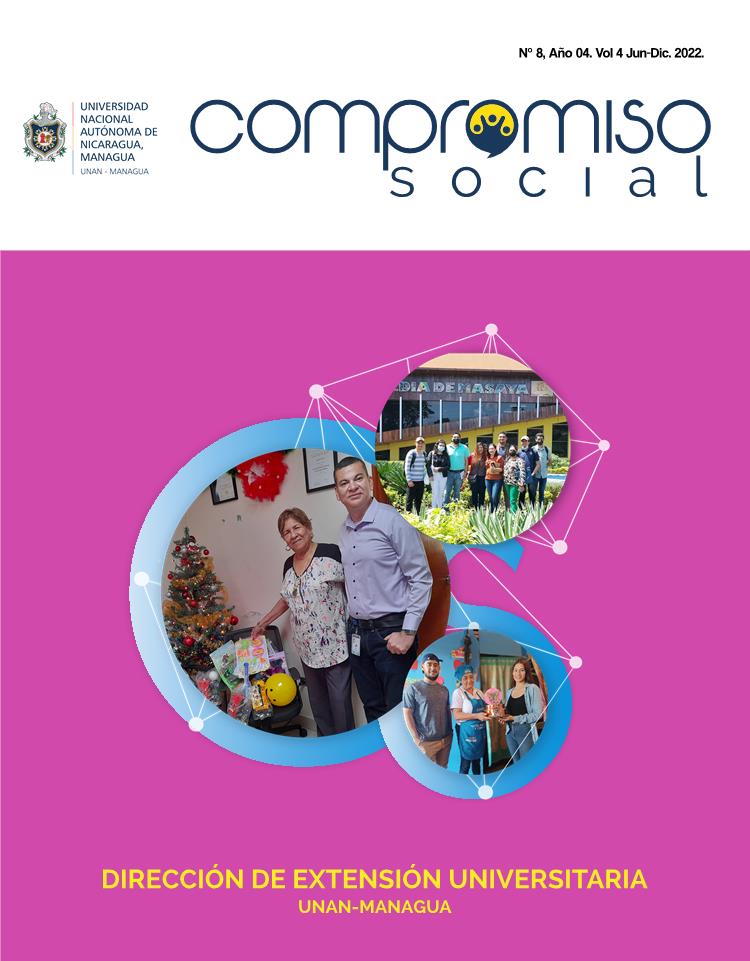From Classrooms to Creative Cities: The Experience of History Students in Extensionist Practices
DOI:
https://doi.org/10.5377/recoso.v4i8.18630Keywords:
History, Training, Creative Cities, Professional PracticesAbstract
History is part of the set of Social Sciences, its object of study is human beings living in society over time and in different geographical contexts. To truly understand the evolution of a social group, it is necessary to understand the elements that define it and its intrinsic relationship: social, economic, political and cultural spheres. This article records the assessment of extensionist practices in the training of students of the IV year of the History career, starting from the strengthening of the concepts, theories and procedures of science, as well as values, social consciousness and identity expression. The writing was mainly nourished by primary sources such as the students' fieldwork reports, oral testimonies and audiovisual capsules that were generated as part of the memory of the Creative Cities project. The methodological route involved exhaustive analysis of the sources in all media, the use of photography as a source, the application of interviews to students to learn more about the perception and learning obtained in the course of the research experience. The selected students had to meet some selection criteria, in the first instance having taken the necessary subjects that would allow them to effectively execute the tasks demanded by the field, the proximity to the place and that the.
This work represents in some way a stimulus to the university student, especially that of the UNAN-Managua, since his contribution, that of his science and his generation, in the construction of a better and fairer society is recognized and made visible. At the same time, it is also an invitation for students of lower levels to integrate into the future extension tasks of the Alma Mater, with determination, commitment and awareness. Therefore, we can say that the Creative Cities represent an opportunity for social and economic growth from the recovery, registration and dissemination of their tangible and intangible heritage and at the same time, they constitute a propitious learning scenario outside the classroom for the students of the UNAN-Managua.
Downloads
References
Cuadra, N. Salinas, A. Cortez, D & García, E. (2022). Informe de trabajo de campo en las ciudades de Masaya, Granada y San Juan de Oriente. 17 de marzo del año 2022. Ciudades Creativas-UNAN-Managua.
Cuadra, N. (20 de octubre de 2022) Estudiante de Historia en Prácticas Extensionistas en Ciudades Creativas. Entrevista individual realizada por Ruth González García.
García, E. (20 de octubre de 2022) Estudiante de Historia en Prácticas extensionista en Ciudades Creativas. Entrevista individual realizada por Ruth González García.
Plan Nacional de Lucha Contra la Pobreza y para el Desarrollo Humano 2022-2026.
Salinas Adrián. Estudiante de Historia en Prácticas extensionista en Ciudades Creativas. Entrevista individual realizada el 13 de octubre de 2022 por Ruth González García.
UNAN-Managua. 18 de marzo de 2022. UNAN-Managua contribuye a la construcción del mapa turístico en Granada. (vídeo). Recuperado de https://www.youtube.com/watch?v=lYlLIqxDEhE
UNAN-Managua. Misión y Visión institucional. Recuperado de https://www.unan.edu.ni/index.php/mision-y-vision#:~:text=Formar%20profesionales%20integrales%2C%20con%20dominio,y%20social%20sostenible%20del%20pa%C3%ADs.
UNESCO. ¿Qué es la Red de Ciudades Creativas? Página web oficial. Recuperado de https://es.unesco.org/creative-cities/content/acerca-de
Downloads
Published
How to Cite
Issue
Section
License
Copyright (c) 2022 Universidad Nacional Autónoma de Nicaragua, Managua(UNAN-Managua)

This work is licensed under a Creative Commons Attribution-NonCommercial-ShareAlike 4.0 International License.




